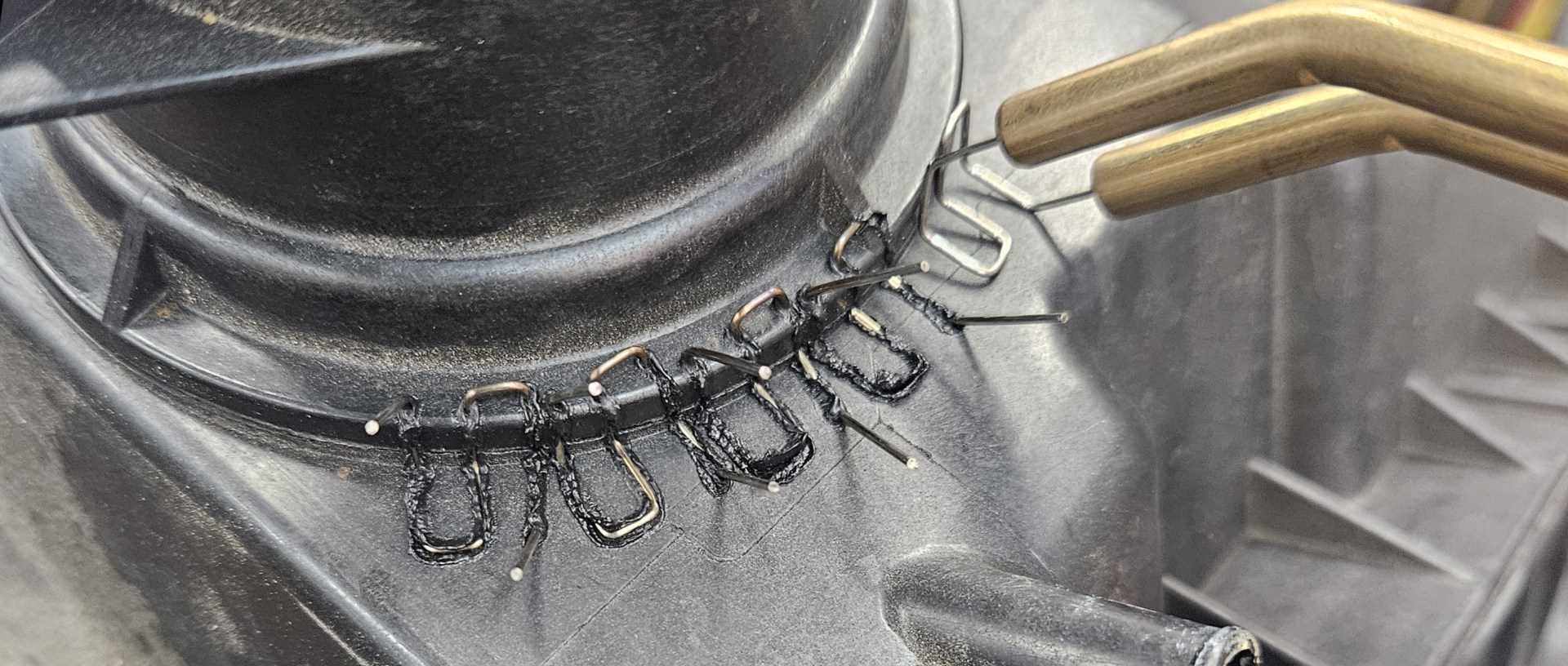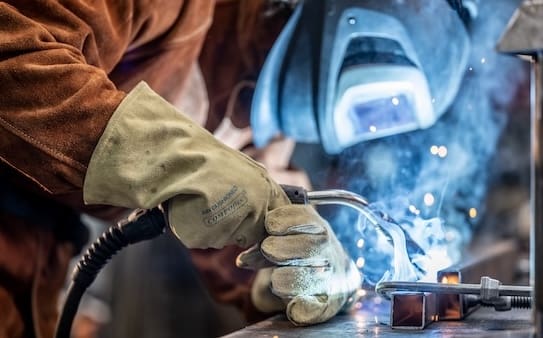Typical Welding Repair Issues and How to Address Them Properly
Welding fixings often encounter a series of problems that can jeopardize the integrity of the final item. Usual issues include insufficient infiltration, porosity, and imbalance, to name a few. Each problem presents special difficulties that require particular approaches for resolution. Understanding these concerns is crucial for welders intending to enhance their end results and skills. This discussion will certainly check out these common welding repair issues and efficient techniques to resolve them.
Insufficient Infiltration
Poor infiltration takes place when the weld steel fails to totally fuse with the base material, causing weak joints and possible structural failures. This concern frequently comes from insufficient heat input, inaccurate electrode angle, or inappropriate welding speed. Welders might come across inadequate infiltration as a result of a miscalculation of the needed parameters for a specific material thickness or kind. Additionally, contamination on the base product's surface can impede effective bonding, intensifying the trouble. To deal with inadequate penetration, welders need to assure ideal setups on their devices and maintain a clean work surface area. Regular inspection of welds is recommended to determine any kind of deficiencies early, permitting timely improvements and the prevention of compromised structural honesty in welded assemblies.
Porosity
Porosity is a typical defect in bonded joints that materializes as tiny gas bubbles caught within the weld steel. This problem can jeopardize the honesty of the weld, bring about decreased stamina and prospective failing under stress. Belgrade Fabrication. Porosity generally occurs from contamination, moisture, or improper welding strategies, which permit gases to escape right into the liquified weld swimming pool. To attend to porosity, welders need to guarantee correct surface area preparation, preserve a clean functioning setting, and make use of suitable welding criteria. In addition, picking the best filler material and shielding gas can alleviate gas entrapment. Routine examination and testing of welds can help identify porosity early, ensuring timely restorative actions are taken, thus protecting the quality and reliability of the bonded structure
Misalignment
Misalignment in welding can develop from numerous variables, consisting of inappropriate configuration and thermal growth. Comprehending the root causes is crucial for reliable resolution. Several improvement methods are available to realign elements and assure architectural stability.
Sources of Misalignment
Welding misalignment commonly stems from a variety of underlying concerns that can jeopardize architectural honesty. One key cause is improper fit-up of parts prior to welding, which can lead to gaps and irregular surfaces. Variations in thermal development during the welding procedure can likewise cause distortion, specifically if the materials being joined have various coefficients of development. In addition, inadequate fixturing and clamping might stop working to hold components firmly in location, bring about activity throughout welding. Badly conserved tools, including welding equipments and tools, might present inconsistencies in the weld grain, more adding to imbalance. Lastly, driver error, stemming from not enough training or experience, can also play a substantial function in developing misaligned welds.
Modification Strategies Readily Available
Resolving imbalance properly calls for a mix of rehabilitative techniques customized to the specific problems available. One typical technique is making use of jigs or components to hold components in the right placement throughout welding, ensuring regular placement. In addition, pre-heating the products can aid lower distortion and improve fit-up. For significant imbalance, mechanical realignment strategies, such as making use of hydraulic jacks or clamps, can be employed to deal with the placement prior to welding. Post-weld warm treatment might likewise be essential to relieve stresses brought on by imbalance. Careful inspection and modification throughout the configuration stage can stop misalignment issues from becoming substantial troubles, promoting a smoother welding procedure and improving general structural integrity.
Distortion
Distortion is a typical difficulty in welding that can arise from different aspects, consisting of uneven cooling and heating. Recognizing the root causes of distortion is necessary for implementing efficient avoidance strategies. Resolving this concern not just boosts architectural integrity however also improves the total high quality of the weld.
Sources of Distortion
When subjected to the extreme warmth of welding, products frequently go through adjustments that can bring about distortion. This sensation largely arises from thermal development and tightening throughout the welding procedure. As the weld area warms up, the product broadens; upon air conditioning, it contracts, which can produce interior stresses. In addition, uneven home heating throughout a work surface can intensify these stresses, causing bending or flexing. The sort of material likewise plays a substantial duty; steels with varying thermal conductivity and coefficients of growth may react in a different way, resulting in unpredictable distortions. Bad joint design and insufficient fixturing can contribute to imbalance during welding, increasing the probability of distortion. Comprehending these causes is vital for effective welding fixing and prevention strategies.
Avoidance Techniques
Reliable avoidance techniques for distortion during welding concentrate on managing warmth input and making certain appropriate joint layout. Maintaining a regular heat input smith welding aids to lessen thermal development and contraction, which can cause distortion. Utilizing methods such as preheating the work surface can additionally minimize the temperature level gradient, promoting uniform home heating. In addition, choosing ideal joint styles, such as T-joints or lap joints, can boost stability and minimize anxiety concentrations. Implementing correct fixturing to protect the work surfaces in position better help in keeping alignment during the welding procedure. Finally, staggered welding series can disperse heat extra evenly, protecting against localized distortion. By applying these methods, welders can greatly reduce the likelihood of distortion and improve the general quality of their welds.
Cracking
Breaking is a typical concern run into in welding repair services, often resulting from different elements such as incorrect air conditioning prices, product option, or poor joint prep work. The incident of splits can substantially compromise the integrity of the weld, causing prospective failings throughout procedure. To resolve this concern, welders must first evaluate the root causes, making sure that materials are compatible and appropriately picked for the details application. In addition, controlling the cooling rate during the welding process is vital; quick cooling can generate stress and anxiety and lead to cracking. Proper joint design and preparation also add to decreasing the risk. Executing these strategies can boost weld top quality and resilience, eventually minimizing the likelihood of fracturing in completed weldments.

Insufficient Fusion
A considerable issue in welding fixings is incomplete blend, which takes place when the weld metal does not adequately bond with the base product or previous weld passes - Belgrade Welding. This defect can cause weaknesses in the joint, potentially compromising the integrity of the bonded framework. Variables adding to incomplete blend include inadequate warmth input, improper welding technique, and contamination of the surfaces being joined. To resolve this concern successfully, welders need to guarantee appropriate pre-weld cleansing and surface area prep work, in addition to readjust their welding criteria to achieve sufficient penetration and combination. Routine assessment throughout the welding process can also assist recognize insufficient blend early, permitting timely restorative actions to boost the overall quality of the weld
Overheating
While welding repair services can boost architectural honesty, overheating check out here provides a considerable challenge that can cause product destruction. Extreme heat during welding can alter the mechanical homes of metals, leading to decreased toughness, raised brittleness, and bending. This sensation is specifically critical in high-stress applications where architectural integrity is critical. Identifying overheating can entail visual evaluations for staining or distortion, along with keeping track of temperature throughout the welding process. To reduce the dangers related to getting too hot, welders ought to utilize suitable strategies, such as regulating warm input, adjusting traveling speed, and making use of ideal filler materials. Additionally, executing pre- and post-weld warmth therapies can assist restore material properties and improve the overall top quality of the repair, ensuring lasting efficiency and security.
Frequently Asked Inquiries
What Are the Typical Indicators of a Welding Flaw?

How Can I Check My Welds for Top quality?
To evaluate welds for top quality, one can utilize visual inspections, ultrasonic screening, and radiographic techniques. Each method ensures architectural honesty, determines problems, and verifies adherence to specified standards, ultimately enhancing the reliability of the welded joints.
What Safety Safety Measures Should I Take While Welding?
When welding, one must focus on security by putting on ideal individual protective equipment, ensuring proper air flow, protecting flammable products away, keeping a clean workspace, and recognizing environments to avoid mishaps and injuries.
Can I Repair a Weld Without Redoing the Entire Joint?
Repairing a weld without redoing the whole joint is possible, depending upon the damage (Belgrade Welding). Methods such as grinding, adding filler product, or utilizing a welding process can properly address details defects while maintaining the surrounding framework
What Equipment Are Essential for Reliable Welding Repair Works?
Essential tools for reliable welding repairs include a welding maker, cord brush, grinder, protective equipment, clamps, and filler products. Each tool plays an essential duty in making certain high quality and safety and security throughout the repair procedure. Porosity usually occurs from contamination, wetness, or improper welding methods, which permit gases to leave right into the liquified weld pool. Inadequately maintained devices, including welding machines and tools, may present inconsistencies in the weld grain, further adding to imbalance. When subjected to the extreme warmth of welding, products commonly undertake changes cswip 3.2 that can lead to distortion. Fracturing is a typical concern run into in welding fixings, usually resulting from various variables such as inappropriate air conditioning rates, material option, or inadequate joint prep work. A considerable issue in welding repairs is insufficient fusion, which takes place when the weld steel does not appropriately bond with the base material or previous weld passes.